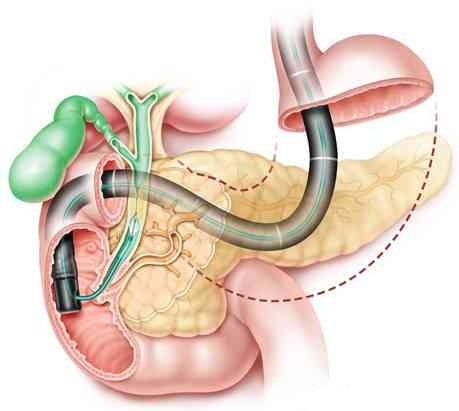 比较两种不同5.5Fr直径的括约肌切开刀对选择性胆总管插管的成功率:一项前瞻性随机研究
背景和目的
比较两种不同5.5Fr直径的括约肌切开刀对选择性胆总管插管的成功率:一项前瞻性随机研究
背景和目的
有关设计括约肌切开刀对插管成功率的影响的文献数据很少,我们旨在对两种不同5.5Fr直径的括约肌切开刀首次插管成功率进行比较
方法
在一项前瞻性随机交叉实验中,天生有突起状乳头的成年患者被纳入研究。两组分别运用预装导丝的两种不同5.5Fr直径的括约肌切开刀,每组包含140名患者。每名患者最多允许进行5次乳头插管以及2次进入胰管。对进入胰管多于2次的案例,在交换使用括约肌切开刀之前可以运用双导丝技术。如果10次乳头插管都未成功或者尽管交换使用切开器,仍进入胰管超过4次,可以行乳头切开术。此实验主要验证指标是首次插管成功率,次要指标是早期并发症的发生率和总体插管成功率。
结果
一组的首次插管成功率相比二组要高(88.5vs77.1%,p=0.011)。交换使用切开刀,以及双导丝技术将需要预切开的概率从11.7%降至5.3%。包含失败案例预切开在内,总体插管成功率分别是99.2%(注:组一{圆头},见图)和98.5%(注:组二{尖头}见图)。括约肌切开刀的类型,交换使用切开刀,以及尝试插管的次数都是插管成功率多元分析的预测因子。
结论
两组不同5.5Fr直径的括约肌切开刀的插管成功率有明显不同。手术过程中主要由括约肌切开刀设计好合适的空间定位来控制插管成功率。联合运用交叉以及双导丝技术可以大幅度减少乳头预切开的必要。
The comparison of two different 5.5 fr sphincterotomes for selective cannulation of the common bile duct: a prospective, randomized study.
Ozaslan E1, Purnak T, Efe C, Ozaslan NG, Cengiz M.
BACKGROUND AND AIM:
There are scarce data regarding the impact of sphincterotome design on cannulation success. We aimed to compare two different 5.5 Fr standard sphincterotomes to determine initial cannulation success.
METHODS:
Adult patients with naive papillae were enrolled in a prospective, randomized, crossover study. Two different 5.5 Fr sphincterotomes preloaded with guidewire (GW) were used in two groups with 140 patients included per group. A total of five papillary attempts and two pancreatic channel entries were allowed as maximum targets. In a case of more than two pancreatic entries, a double GW technique was attempted before crossover. If choledochal cannulation was not achieved within ten papillary attempts or more than four pancreatic entries despite crossover, access papillotomy was performed. Successful biliary cannulation was the primary outcome. Secondary outcomes were incidence of early complications and overall cannulation success.
RESULTS:
Higher initial cannulation success was achieved in group I compared with group II (88.5 vs. 77.1%, p = 0.011). The crossover and double GW techniques reduced the need for precut from 11.7 to 5.3%. The overall cannulation success including precut for failed cases was 99.2% (group I) and 98.5% (group II). Sphincterotome type, presence of crossover, and number of cannulation attempts were predictors of successful cannulation in multivariate analysis.
CONCLUSIONS:
There was a significant difference in cannulation success between two different 5.5 Fr sphincterotomes. The cannulation success was mainly governed by sphincterotome design which serves a proper spatial orientation during the procedure. The combined use of crossover and double GW techniques may substantially decrease precut necessity.

翻译:胡越 审校:张立超 侯森林 (Digestive Diseases & Sciences 2014)




